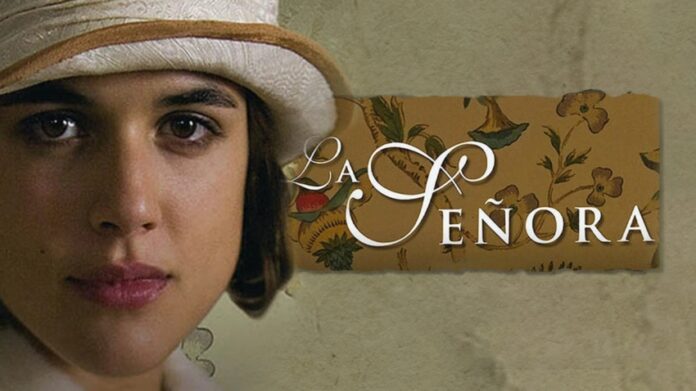No longer just an indicator of whether a woman is married or not, the concept of a “Señora” has taken on a life (and character) of its own in recent years. Driven by pop culture, social media, television and perhaps a series of strong personalities in daily life, the “Señora” has become a fascinating representation of a certain type of woman in Mexican culture — one that embodies an attitude of both elegance and authority … with a touch of drama.
The modern-day concept of a Señora has implications that touch upon age, female roles, family, tradition and class.
So who is this (sometimes infamous) character? What do Mexicans mean when they talk about una Señora? What does it mean to be a Señora today?
The Señora, traditionally
In Mexican society, being called “Señora” touches on three interconnected aspects: sexuality, civil status and age. According to research by Hortensia Moreno, an academic at UNAM’s Center for Gender Research and Studies, these connotations reflect gender stereotypes active in Mexican society, despite belonging to an older symbolic framework.
In a Spanish cultural context, a Señora refers to a respectable, mature, traditionally feminine woman.
My neighbor, Rosario, explains: A Señora is usually a married woman, she says, often someone who has kids. You wouldn’t really call a woman in her early 30s a Señora; it more refers to someone mature, who acts like it.
The transition from “Señorita” to “Señora” represents a critical moment in Mexican women’s lives, often occurring around age 40, regardless of marital status. This shift carries emotional weight because it’s perceived as indicating a loss of youth. Many Mexican women resist being called “Señora” because it implies they’ve crossed into a demographic associated with diminished social value.
Despite traditional associations with the term, the definition of a Señora has expanded into a stereotype that is both celebrated and satirized; memes and comedic sketches often feature the “Señora de la colonia” (neighborhood Señora), a woman who gossips, maintains order at social events and upholds traditional values but secretly enjoys luxury and intrigue.
The Señora in pop culture and telenovelas

In Mexican pop culture and telenovelas, this figure is brought to life as a woman of elegance and authority, often wrapped in privilege and dramatized with a flair that makes her unforgettable. She is the matriarch who commands a room with her impeccable fashion, the high-society hostess who enforces etiquette with precision, and the sharp-tongued presence whose wit and sarcasm can both entertain and intimidate. Always poised, always stylish, the Señora moves through stories as both a pillar of tradition and, at times, a villainous force.
No actress captured this archetype more vividly than Mexican actress María Rubio in her role as Catalina Creel in Cuna de Lobos. Catalina is the sophisticated and ruthless matriarch of the Larios-Creel family, known for her trademark eye patch. A refined, commanding and impeccably poised character, her ambition revolves around ensuring her son Alejandro becomes the sole heir to the family’s pharmaceutical empire, eliminating anyone — through lies, manipulation and even murder — who threatens her goals.
The character’s exaggerated elegance, authoritative nature and high-society demeanor turned her into the definitive telenovela Señora, a figure so iconic that she continues to define the archetype in Mexico’s cultural imagination.
‘Yo no soy una señora’
In 2009, Mexican pop star María José reignited the cultural conversation around what it means to be a Señora with her explosive cover of “Yo No Soy Una Señora.” Catchy and defiant, the track quickly became a national anthem of female empowerment — pushing back against the very stereotypes that telenovelas and everyday culture have long dramatized.
While the traditional Señora is imagined as elegant, mature and bound by decorum, José’s lyrics gave life to a woman who refuses that role altogether. When she sings, “Yo no soy una señora, una de esas que tiembla con apenas dos palabras,” José rejects the image of a submissive woman who trembles at a man’s words. Instead, she claims strength and independence, defining herself on her own terms.
Later, in “Yo no soy una señora, soy de aquellas que pueden darte el alma,” the emphasis shifts to passion and authenticity: She is not bound by respectability or appearances but by her ability to love, give and live fully.
The chorus’ refrain, “Yo no soy una señora” becomes a refusal to be boxed into stereotypes of maturity, propriety or aging. The song turns the archetype of the Señora on its head, offering a counterimage to figures like Catalina Creel. Whereas the telenovela Señora rules with elegance and ruthless authority, José’s protagonist insists on freedom, individuality and the right to live unapologetically.
In doing so, the song not only became a pop hit but also a cultural touchstone — an anthem for women who refuse to be defined by society’s expectations.
‘In my Señora Era’: A lifestyle movement
@jerlynntorres Tap into your #senora era and let your intention guide you ✨👩🏽🍳🇲🇽 . #micasa #rinconcitoenelcielo #mexicana #senoralife #latinachef ♬ Perfume de Gardenias – La Sonora Santanera
If the telenovela Señora once ruled households with elegant menace, and María José’s pop anthem rejected the label altogether, social media has brought us the newest twist: a generation that is embracing the phrase “in my Señora Era.”
What started as a lighthearted hashtag has become a lifestyle movement that reframes the Señora not as a marker of age or decline but as a symbol of wisdom, comfort and intentional living.
On TikTok and Instagram, millions of young Latinas have leaned into the archetype of their mothers, tías, and abuelas — showing off slow mornings with cafecito, airing out bedding in the sun or sweeping to old bolero songs — as a way of celebrating traditions once dismissed as ordinary.
In this reclamation, the Señora is no longer a cliché but an aspirational figure who has traded hustle culture for peace, presence and a joy in everyday rituals.
Hashtags like #SeñoraEra and #SeñoraTok have amassed millions of views while, offline, the movement has inspired groups like City Señoras in New York, where cafecito walks and games of lotería have grown into lively community gatherings.
Younger Latinas are choosing to launch their Señora Era “early,” transforming domestic rituals into acts of self-care, healing and connection to family traditions termed as “ancestral slow living.”
In the “Señora Era” movement, calling yourself a Señora is no longer to accept a label imposed from the outside. It chooses a way of life that honors tradition while carving out space for balance and joy.
The evolving Señora
Whether rejected, dramatized or reclaimed, the figure of the Señora continues to evolve, embodying the tensions between tradition and change. In the end, to speak of la Señora today is to recognize a cultural force that reflects how Mexican — and, more broadly, Latino — societies imagine femininity, authority, age and tradition itself.
Do you have a Señora in your life, or are you channeling your inner Señora? Let us know more in the comments below!
Monica Belot is a writer, researcher, strategist and adjunct professor at Parsons School of Design in New York City, where she teaches in the Strategic Design & Management Program. Splitting her time between NYC and Mexico City, where she resides with her naughty silver labrador puppy Atlas, Monica writes about topics spanning everything from the human experience to travel and design research. Follow her varied scribbles on Medium at medium.com/@monicabelot.
